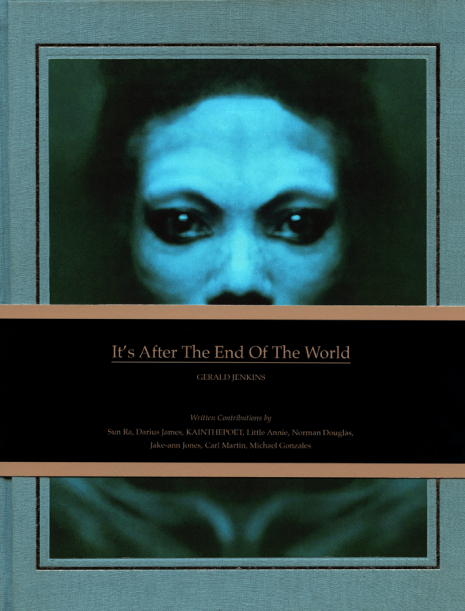
Afrofuturism—the term was coined by Mark Dery in a 1993 essay titled “Black to the Future” where he mused about Black science-fiction and art—is a genre agnostic aesthetic philosophy at the intersection of the African diaspora, technology, sci-fi, fashion and what comes next. Whatever that will be. The great Sun Ra is the spiritual godfather of Afrofuturism, his infinite worldview as well as his intergalactic person are the very personification of what the word stakes out. George Clinton’s Parliament-Funkadelic is very Afrofuturist. Rammellzee is very Afrofuturist. So are Wu Tang Clan, MF DOOM, Grace Jones, Janelle Monáe, Lee “Scratch” Perry, FKA twigs, Detroit techno music and Jimi Hendrix. Author Samuel R. Delany is certainly an Afrofuturist and so was Octavia Butler. The Black Panther movie was hella Afrofuturist. I think you must get the gist of it by now.
Visionary photographer Gerald Jenkins’ exquisite new coffee table book, It’s After the End of the World is a fantastic exploration of Afrofuturism, in image, and in text provided for Jenkins’ project by Darius James, Jake-ann Jones, Carl Martin, Little Annie, Michael Gonzales and Norman Douglas. It’s one of the most exciting and impressive things I’ve seen in ages, a truly unique, very personal and vibrant statement. Aside from the quality of the work, it’s an exquisite publication, befitting what is inside its covers, that will look fantastic sitting in your living room. The book is very much an objet d’art itself, 344 glossy pages bound in a sturdy green hardback cover with a black and gold book band. I could say more, but the images, and the artist, can speak for themselves.
Jenkins describes It’s After the End of the World as:
“... a picture novel study of the human spirit in the fantastic and magical and the human soul in the metaphorical and physical”
I asked Gerald Jenkins a few questions via email.
Dangerous Minds: What’s your background?
Gerald Jenkins: In 1985 I was a nightclub DJ and attending a film and TV course in Australia. The Residents toured their 13th Anniversary show and I took some pictures which made me change direction and pursue photography. From there I became a freelance photographic assistant and started my own practice in 1990, instigating two projects. One being musicians’ portraits backstage and the other on Australian indigenous cultures. The indigenous project was a harrowing experience which alienated me from many aspects of Australian society. I exiled to Madrid in Spain in 1999 but soon realized it could only be a temporary solution. In 2001 I moved to London and concentrated solely on my portraiture of musicians backstage.
What inspired It’s After the End of the World?
Gerald Jenkins: I first met the Sun Ra Arkestra in 2003 and began discussing theories on indigenous practice with several members. Theories of time and space which I decided to explore further. Researching Sun Ra and his philosophies was the catalyst and I have been working with the Arkestra themselves in parallel to this completed book since 2009.
Was the work in the book done specifically for this project?
Gerald Jenkins: Yes. I was working in isolation. Aside from about ten pictures in the book I conceived the images in solo.
How did you go about selecting the writers you collaborated with? They’re all such unique—and very specific—voices.
Gerald Jenkins: Initially I only had poems and quotes by Sun Ra, and I was in discussion with KainThePoet to include handwritten lyrics to his piece “Black Satin Amazon Fire Engine Cry Baby” from the album The Blue Guerrilla. My publisher Art Yard suggested I contact Darius James, which I duly did and from there Darius and I devised the structure to include commissioned prose for all the individual chapters. Darius was initially in direct contact with the various writers instructing them in the chosen themes, and I had created layouts of the individual chapters that the writers were given in order to respond to. The written texts are crucial to the work and have been immeasurable in terms of transforming the message. It was easily the greatest enjoyment, personally, to have these brilliant texts accompany my pictures and transform the perception of content.
It feels like the vision that you explore in the book was prescient. How does it feel looking out your window and suddenly it IS after the end of the world?
Gerald Jenkins: It’s a perplexing thought but I’m going to quote Sun Ra’s mentor Alton Abraham on this.
It is the world we currently live in that is a myth.
Alton states “We had studied the prophecy of the pyramids, the earth stopped back in the thirties, ‘round 1933 I think. After the year 2000: ‘It’s After the End of the World don’t you know that yet?’ This would explain why the spirit of the people is in disarray, because the leaders haven’t taught them properly. They’re teaching from tradition.”
You can order It’s After the End of the World directly from the artist here.
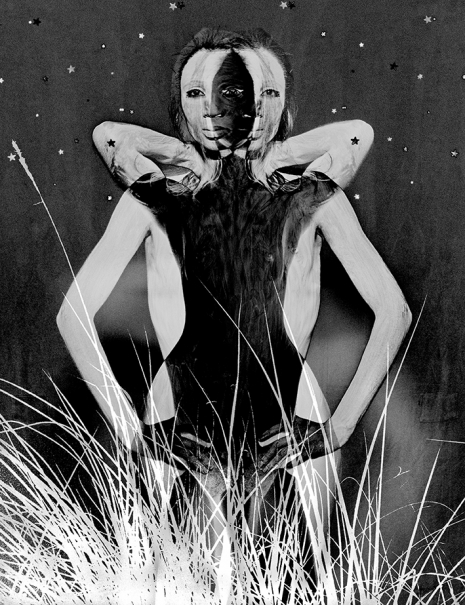
“Ancient Black”
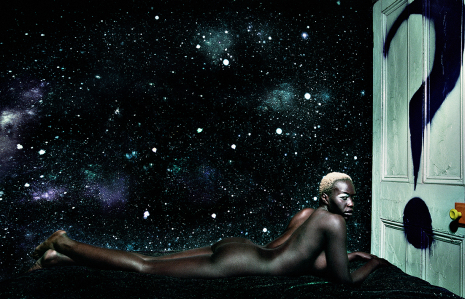
“Don’t You Want to Know The Greater Mysteries of the Universe?”
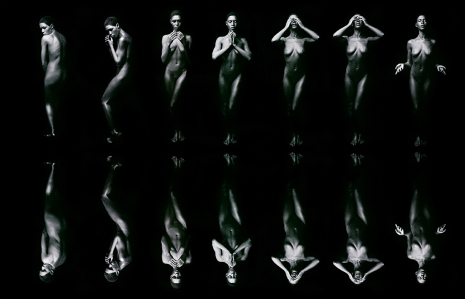
“Jupiter Way, with Jodie Turner Smith”

“Misfortune’s Wealth”

“Music in Sea Minor”

“Spaced Out”
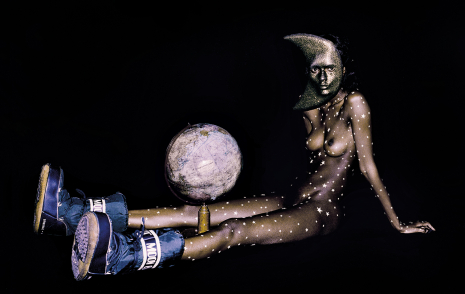
“The Secrets of Wisdom”
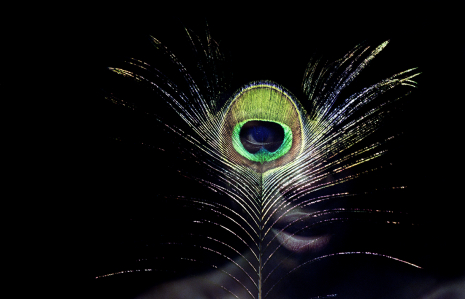
“All Seeing”
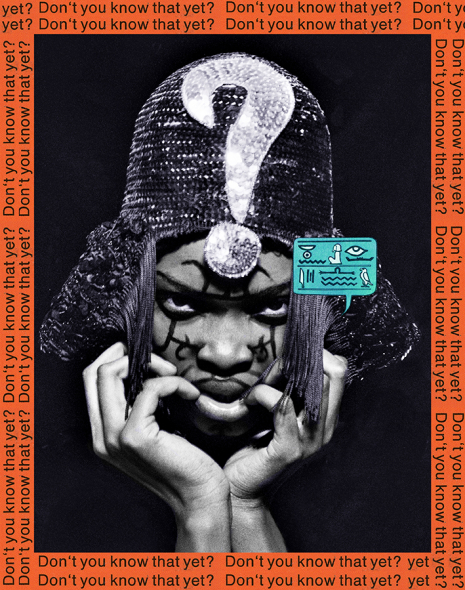
“More Questions Than Answers”
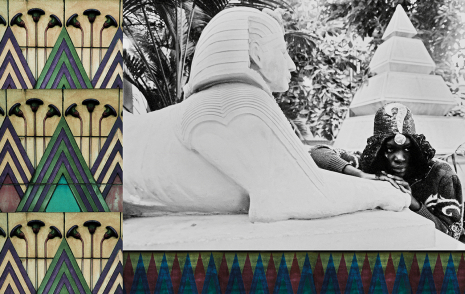
“Nothing Is”
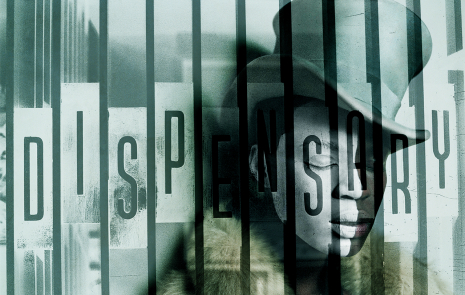
“Big Pharma”

“The Immeasurable Equation”
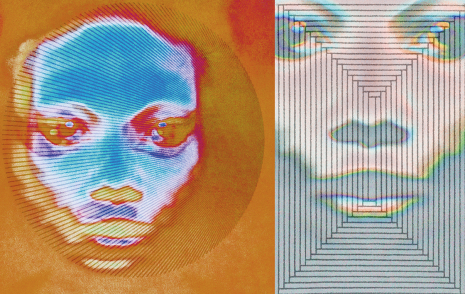
“Transmutation”

A limited edition collage print titled ‘Requiem In Utopia’ is for sale on the artist’s website. The print is signed and measures approximately 33 inches x 44 inches and is produced on Giclee Photo Rag 380gsm paper stock. £350 with free international shipping.